Entry 1 – May 2022
Hello, my friend, and welcome to the first ever entry in my Writing Process Journal. I’m so glad you found your way here as I’m excited to bring you behind the scenes for an in-depth look at my writing process.
Although I’ve previously written and self-published two collections of short stories—Fairly Familiar and Snapshots of Spain—I’m still figuring things out when it comes to my writing process for a novel. Since I’m still in the relatively early stages, I decided it was perfect timing to bring you along for the full ride!
I’ve been keeping notes about these things for myself since I embarked on my author career back in January 2020, but this is the first time I will be sharing these thoughts *in-depth* with anyone else. I’m feeling a little vulnerable, but very excited!
My intention is to make this “journal” the most detailed and honest account of what’s going on with my writing, my WIPs (works-in-progress), and my personal life as it related to my writing progress. But enough about why we’re here—let’s get to it, already!
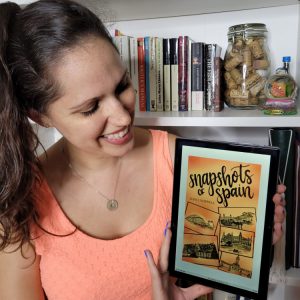
How we got here:
[In future entries, I’ll spend less time going back, but for this first one I feel the need to summary the last few months so you understand where I’m coming from. Then we can get into the nitty-gritty that has been the last month and the first few stages of my writing process.]
At the end of September 2021, I published Snapshots of Spain and decided it was time for me to transition to writing novel. I wanted to take on NaNoWriMo (National Novel Writing Month) in November 2021 and so I read Save the Cat! Writes a Novel and otherwise tried to prepare myself for the challenge of writing an entire novel (or at least 50,000 words) in a month.
The truth of the matter was that I simply didn’t prepare enough. I choose to work with the story idea in my head that I was most intrigued about (a mystery/suspense novel) but I did not dedicate enough time to figuring out the story before I got started. I wrote 37,740 words for that project but I still didn’t feel like I was moving the story along. In the end, I decided to “quit NaNoWriMo” with just five days left of the challenge.
In December 2021, I did a lot of soul-searching and eventually started transcribing some old journals of mine, where I believed a potential new storyline was hiding. I didn’t even plan to work on it right away, but it felt easier to type sentences that were already formed elsewhere into the computer than to try to come up with a brand-new story. I was comforted by “making progress” with something even though my creative well was feeling pretty dry.
In January, my husband and I packed up our entire lives and moved from Granada to the southern coast of Spain. It’s only a 1.5-hour-difference, but it was an all-consuming, life-changing decision. I am incredibly happy in my new home (especially in my beautiful new home office!), but it took a lot of time and energy for us to get to this point. I transcribed a little bit here and there through to the end of February but did no other writing until March.
However, I did take Sarra Cannon’s Publish and Thrive self-publishing course for five weeks spread across February and March, and it was an eye-opening and motivating experience. I got so many new ideas, finally took the steps I needed to define my genre, and began looking at my writing career more like the entrepreneurial endeavor it is. Because of this course, I now have a five-book/five-year plan for myself. Eek!
Creating this plan made me realize that my original NaNoWriMo project (the suspense novel) shouldn’t even make it into one of my first five slots. The story I’d been transcribing, however, should. I set up specific goals and deadlines for myself for the ninety-day-period between March 15 and June 15, loosely following Sarra’s HB90 planning method. With these intentions in mind, I’ve set out to finish not one but two drafts of my WIP (this transcription story) before giving Camp NaNoWriMo a go in July.
Working on Draft 1 of my WIP (March-April 2022):
Armed with the know-how and confidence Publish and Thrive instilled in me, I began going back through the transcription and writing short scenes to intersperse between those that already existed. As I did so, I also made small changed to what I had previously written. I wasn’t doing much more than doctoring the story that was already there, but I considered this my first draft of the project.
I made a goal to finish Draft 1 by April 20, when I would leave for a two-week stay in the USA, and I was so proud of myself for meeting that goal on April 18! In doing so, I was able to treat my time abroad as an intentional, well-timed step away from my WIP.
All the great writers suggest setting aside a story between drafts (so that you can forget about it a little bit and come back to the story with fresh eyes), and so I saw this as my personal life syncing up perfectly with my writer life.
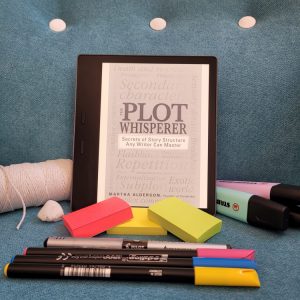
Preparing and plotting for Draft 2 (May 2022):
One of the other goals I set up for this HB90 quarter was to read at least one craft book to help me with my character and story development. As a result, I went into the NaNoWriMo Humble Bundle my husband set me up with back in November and downloaded five of the many writing books included in the bundle onto my Kindle for our time in the USA.
My main priority among these books was The Plot Whisperer by Martha Alderson. I’ve spoken about this book a lot elsewhere, so if you might be interested in it yourself please check out my review on Goodreads or The Story Graph. Personally, I found it to be the perfect book for this stage of my writing process.
The Plot Whisperer reminded me about the most important elements of story development while encouraging me to consider and honor my own journey as the author of the story. Even more importantly, it helped me see that what I already had written from my transcription was not, in fact, the “front story,” but rather the backstory.
What I had in Draft 1 was vital to my protagonist’s journey, but it was not the journey in itself. Essentially, this led to the realization that in Draft 2 I would truly need to write a new story. I didn’t find this disheartening, though. I had made a point to read a craft book before starting Draft 2 for this exact reason and I’m glad to have made the distinction this early in the process.
Once I finished reading and reviewing The Plot Whisperer, I had four printed pages of notes on plotting elements to include at each stage of my story as well as four more pages where I wrote down the steps of some of the exercises the author suggested.
Among these exercises were the three that I completed this month: Theme Mapping, the Scene Tracker, and The Plot Planner.
Theme Mapping:
The first exercise I completed upon finished this book was the one for identifying themes. This was definitely an exercise I wanted to do with pen and paper (and color-coordinated markers).
Alderson suggested drawing an oval in the middle of the page where your story’s “thematic significance statement” will go but leaving this blank until the end. From there, you essentially create a brainstorming web in which you write down any and all major themes you can think of, connecting them back to the main oval as well as adding smaller themes they relate to.
Going in, I was a little nervous and hesitant to find that I didn’t have clear themes. However, after twenty minutes, I found myself with a full-page, vast, and interconnected web of topics. At that point, it was time to analyze what I had and mold it into an encompassing one-sentence thematic significance statement.
In this particular case, it meant connecting the themes of loss, relationships, identity, adapting to change, and writer’s block. The sentence I came up with for that center oval is as follows:
In order to overcome loss and great change, one must dig deep to understand herself, her relationships, and her old wounds in order to grow and have the strength to move forward.
Of course, as I write the later drafts of this WIP, that statement may shift or change completely. However, it felt really good to come up with something concrete rather that just a vague idea of the themes I want to explore (which has been my past tendency).
This theme map is now mounted on the closet door in my office so that I can see it every day. This was a very validating preparation tool for me to complete for two reasons. First, it felt good to see that I do have a clear idea of the themes I want to explore in this WIP—and that those themes are well-aligned with the genre of women’s fiction.
Secondly, I found that, somehow, each one of my themes linked with the other themes on the map! This was not something that Alderson suggested you should do or even hope to do, so I wasn’t expecting it to happen. The fact that it naturally developed, though, left me feeling even more inspired and aligned with this story. Yay!
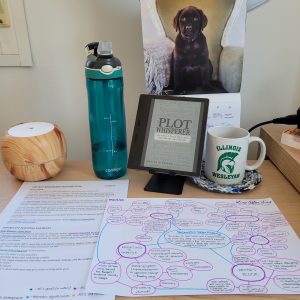
Scene Tracker:
Technically, Alderson suggests making your Plot Planner first and only turning to the Scene Tracker after writing your first draft (or, in my case, Draft 2). However, I wanted to complete this exercise on my laptop—where alterations were quick and painless—before turning to the visual Plot Planner that’s now mounted in my office.
As such, I created a simple Word document with a four-columned table. In the first column, I noted down the name of the scene (these will not be the names of the chapters or anything of significance to the final product, but rather the “names” that we authors use, such as Opening Image, Debate, Crisis, etc).
In the second column, I wrote a brief summary of what will happen in the scene. In the third, I took note of any of the protagonist’s fears, flaws, or elements of her backstory that come into play in that scene. And in the final column, I wrote whether the scene was driven by dramatic action or emotional development.
As a result, I was able to see that my main story is broken down into twenty-eight scenes, with eleven that are mainly emotional development and seventeen that are mainly dramatic action.
I was actually surprised to find that I had more dramatic action planned because I consider myself a writer who is drawn to the internal conflicts more than the external ones. As such, I thought I would need to ramp up the amount of action but, for the moment, it feels ike the action-to-emotion ratio will be good.
Plot Planner:
Finally, I turned to building my Plot Planner. This is the primary tool that The Plot Whisperer relies on and so it was very exciting when I finally reached the moment when I felt ready to flesh it out. Alderson suggests making your Plot Planner on a six-foot-long piece of paper. This neither felt plausible for me to find nor practical for my office space so, instead, I opted for putting the Planner together directly on my closet door.
In order to do so, I utilized items I already had around the house—string for the plot line, Blu Tack to hold the string and other papers in place, and color-coded Post-Its. I followed Alderson’s advice about using one color (pink) Post-Its for the emotional development scenes, which I placed below the plot line and another color (yellow) for the dramatic actions scenes, which were placed above the line.
While I understand you can move Post-Its around, I really appreciated having a clear idea of how many scenes I had to fit onto this Plot Planner so that I could place them / space them out well the first time. I was only able to have this clarity because of completing the Scene Tracker first. As a visual learner, I enjoy seeing the finished product on my wall, but I don’t relish the process of having to move the scenes around (as you may if you’re more of a kinesthetic/tactile learner).
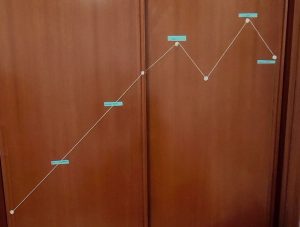
Working on Draft 2 (May 2022, onward):
After all of that prep work, I was finally ready to embark on the process of actually writing Draft 2! I must admit, since I’m usually a pantser who doesn’t plan out the details of a story before writing it, I did worry along the way that all of time and energy I put into plotting was valuable time lost not actually working on my manuscript.
Because, yes, I previously only viewed the writing and editing as actual progress. However, my experience with this WIP and the Plot Planner (so far, at least) is changing my mind.
It has been really helpful to have the outlines I now have in the form of the Scene Tracker (with more details and reminders of the links and themes I want to include in each scene) and the Plot Planner (a clear, visual representation of the energy each scene should be building).
Because of these tools, I feel less reliant on the ever-unpredictable “inspiration,” and more like I can write on a schedule because the intention of each scene is already mapped out for me. Of course, this might change! And being able to share such changes in my mindset throughout the process is the whole point of keeping this journal. We’ll see how I feel later on in the draft. For now, though, I’m loving the structure and direction these tools and exercises have provided me.
There were many more exercises Alderson suggested in The Plot Whisperer, nine of which resonated enough with me to make it into those notes I took. However, I will be waiting until later in my process to see if I want to complete them. Right now, my focus is on completing this draft by June 15 (or, at the latest, the end of June).
The Reality behind this writer:
[This was a very lengthy first entry because I had a lot of “backstory” to get to before this month’s update. Going forward, my entries will be more concise. However, one section that I want to be sure to always include is this one. I think it’s really important to acknowledge that the writing process does not happen in a vacuum!]
Like any other writer, I have a lot of different elements from my life that converge to have an impact on my writing. I included bits of this as I talked about moving house and traveling back to the USA, and “distractions” like that have continued in the last month I’ve been working on Draft 2.
Although I originally planned to only set Draft 1 aside for the two weeks I was in the USA, that break quickly turned into a month because of the circumstances. I always need a couple days to ease back into my routines when I get home, but in this particular case, we had a business trip to the UK planned just one week after we returned from the USA.
As such, during that week at home I caught up on indie author admin tasks, did a 60-day evaluation of my HB90 goals and set plans for the final 30 days of my quarter. I finished reading The Plot Whisperer, went back through the book to take copious notes on my computer, and mapped out my themes.
It wasn’t until I returned from the UK that I completed my Scene Tracker and Plot Planner, let alone started writing Draft 2. Thus, the week of May 16th was a BIG one for getting going with this all. Monday and Tuesday were spent with my plotting tools, then Wednesday-Friday were solid writing days in which I averaged 2,000-2,500 words written per day.
Based on the assumption that my story will truly end up as the 28 scenes I outlined, this means that after only three days of writing, I finished 11.9% of this draft. That may or may not see like much to you, but it’s very impressive for me!
Perhaps it’s because I’ve never had a way to truly estimate measures of progress in the past. Or perhaps it’s because I know I’ve often spent three days writing and barely gotten down that much of short story in the past. Whatever the reason, I’m feeling really good about Draft 2, even though life circumstances mean my writing days recently have been minimal.
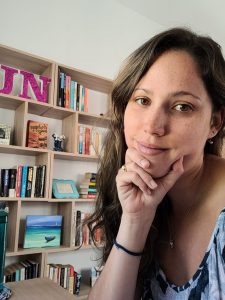
Looking forward:
Between the demands of selling our place in Granada, having a friend come to visit, and fighting a bad bout of seasonal allergies, I was lucky to get in just one day of writing this week. The partial scene I wrote that day brings me up to 14.3% finished with Draft 2.
Per Sarra Cannon’s goal-setting advice, I had a range set for my May goal: to finish 40-55-70% by the end of the month. At the moment, only the bottom half of that range is looking plausible. Still, I’m confident that I will be making slow but steady progress toward my goal.
I still believe I can finish Draft 2 before it’s time to focus on Camp NaNoWriMo (which I plan to do with a completely different story, but more about that later). It will be a very fast turnaround for me—most likely the fastest I’ve ever churned out a draft—but this is also the first time I’ve had this much plotting in place to guide me, so I believe it’s possible.
We’ll see though, right? I’ll let you know how it all goes next time in Entry 2 of my Writing Process Journal.
Until then, happy reading, my friend!
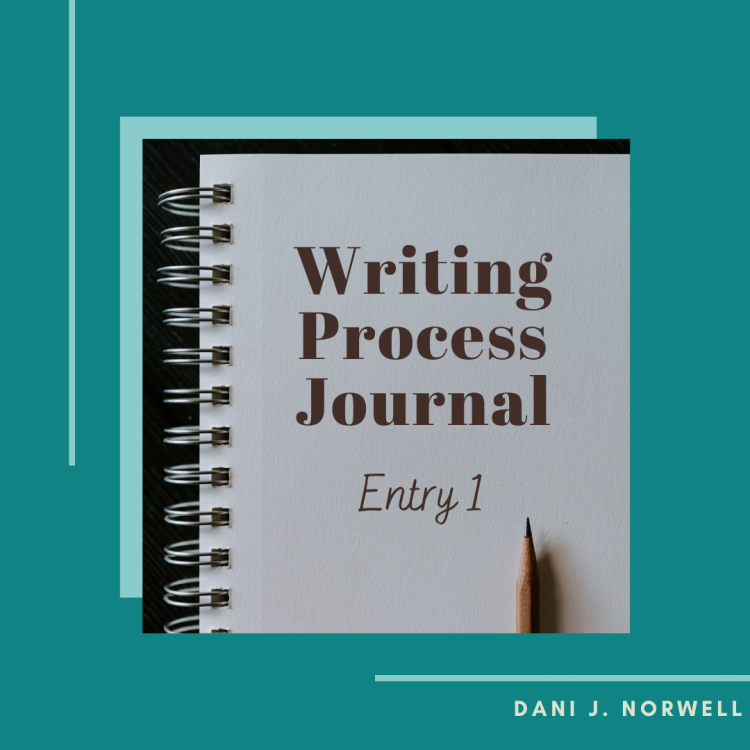
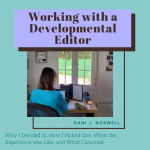
2 thoughts on “Writing Process Journal – Entry 1 – May 2022”